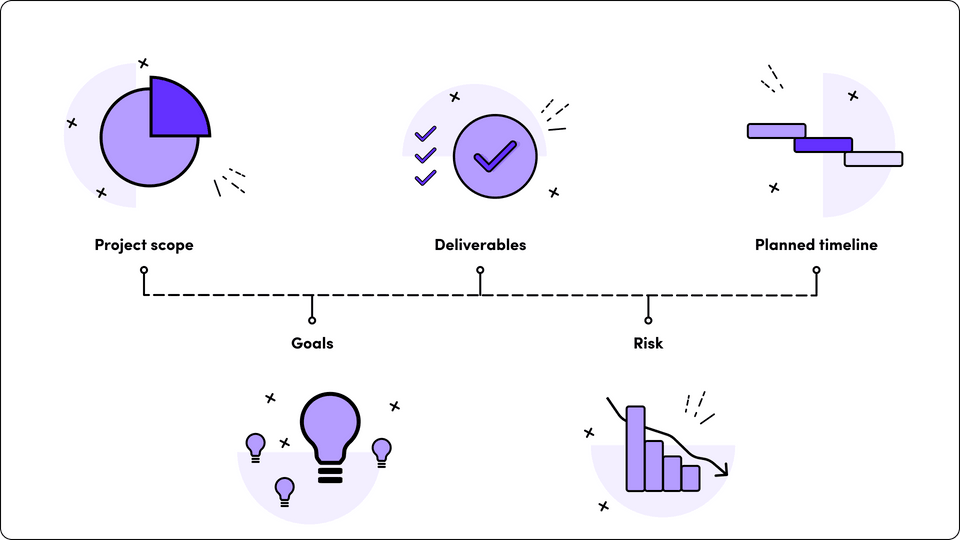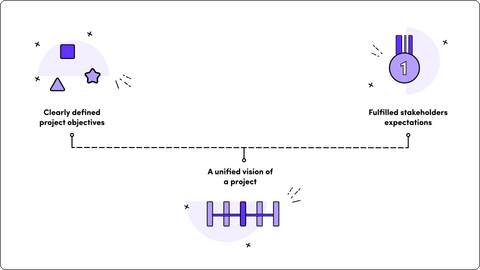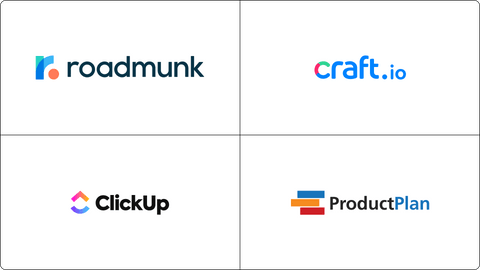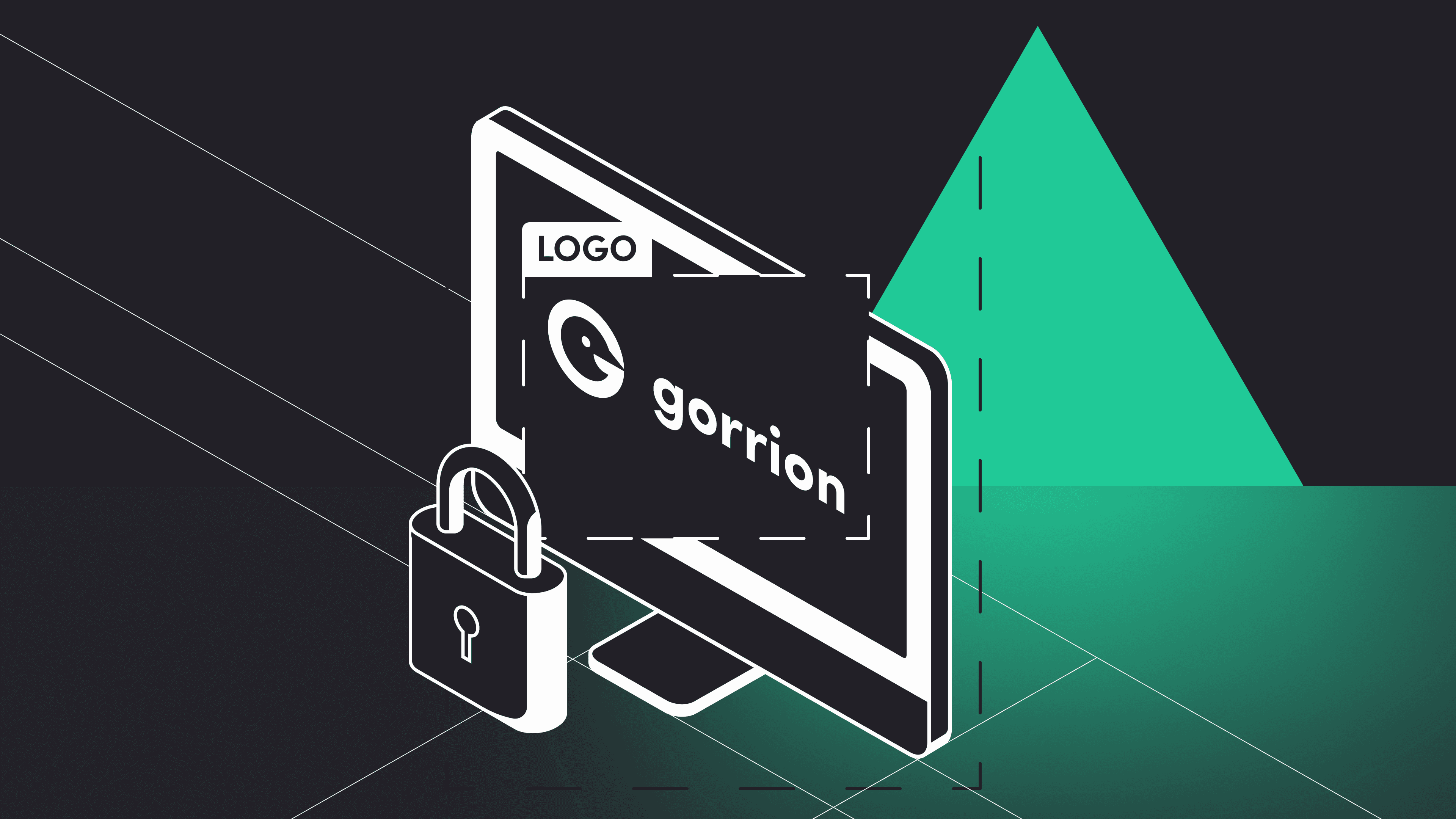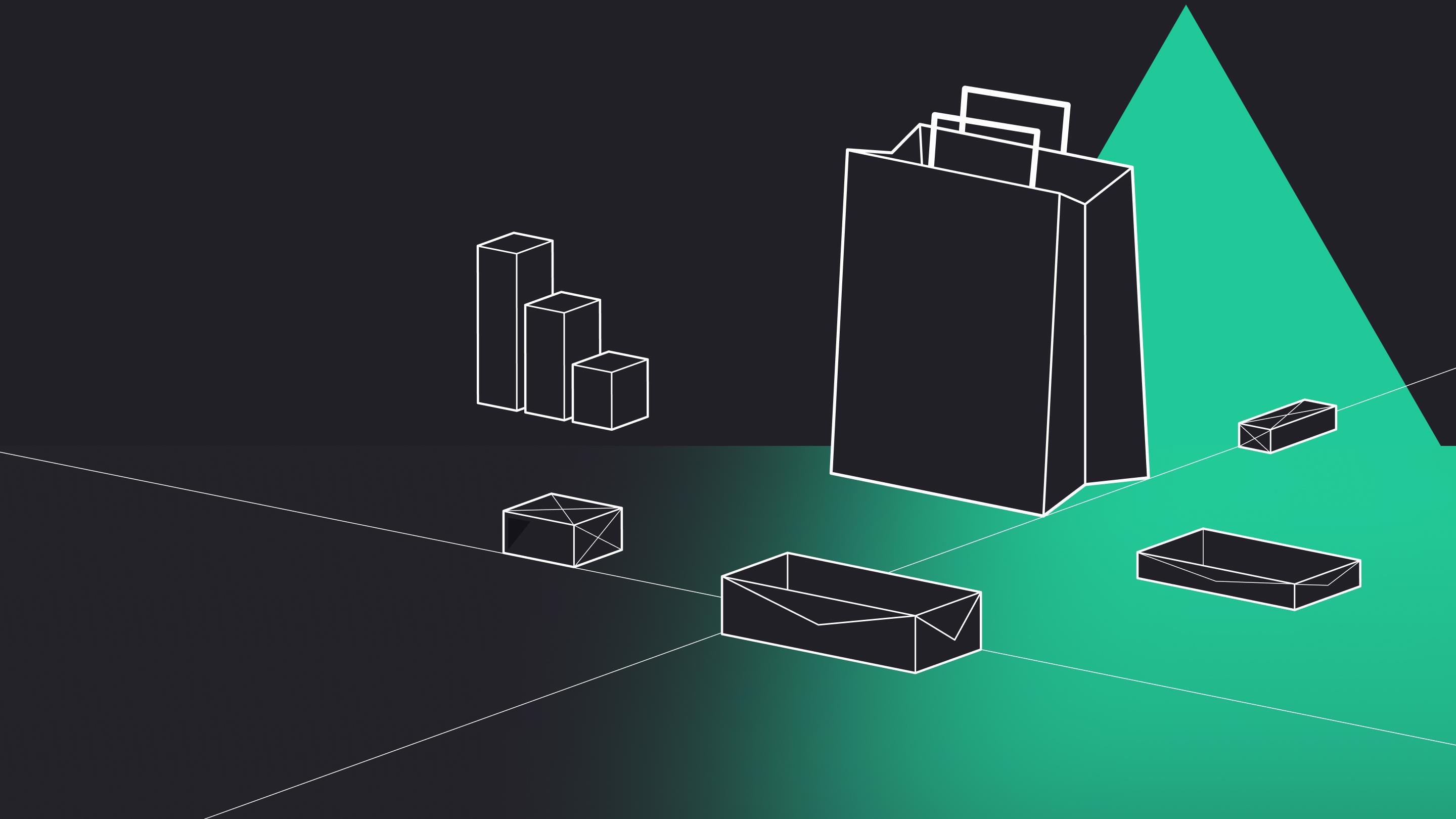

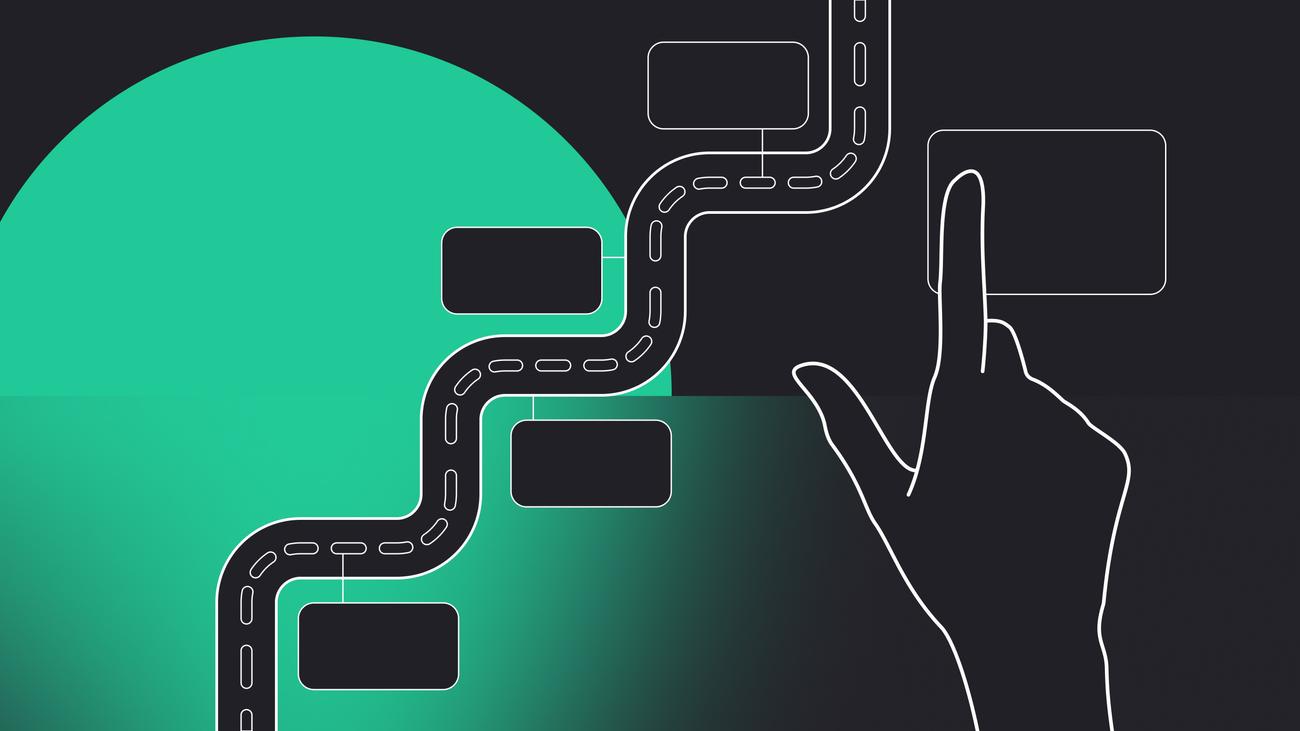
Project roadmap – definition, tools and its management
Project management in software development is a highly demanding process. It involves multiple milestones, risks, deadlines and, of course, expectations. That’s why the project team, client, and stakeholders must be on the same page. One of the tools that can help with that is the project roadmap. Thanks to that, you organize the project strategy and provide an insightful source for everyone engaged in a software development process.
What is a project roadmap, and how to create one? Do you need a project roadmap? Also, how does it work in Agile project management?
This article is an overview of the project roadmap. Here, I’ll cover the definition, benefits, tools, as well as roadmap examples. Lastly, I’ll try to differentiate project roadmap from product roadmap.
What is a project roadmap?
A project roadmap is a high-level overview of a project. It helps visualize the project along with its risks, important milestones, strategic goals and many more. A project roadmap serves as a guide for all the people involved.
In the project management, it’s a visual representation of high-level details, such as key components, business objectives, project goals and many more. In other words, it includes all critical elements in the project lifecycle – the big picture. That’s why it should be initially prepared at the beginning of the process and updated regularly with the project progress. The project roadmap shows how all the pieces come together as a whole. In other words, you get a project plan.
The basic elements of a project roadmap include:
- project scope,
- goals,
- deliverables,
- risks,
- planned project timeline.
How to make a roadmap for a project?
Now that we know what is a project roadmap let’s move on to its creation – how to write a project roadmap?
Agile development is an iterative process that allows for changes and flexibility. Hence, in this case, the project roadmap should be treated as a living document – changing and evolving during the process. But few stages are crucial during the project kickoff meeting, just when the process starts.
Plan the project schedule
Figuring out the timeline of a project is crucial to successful development. In this way, everybody knows about the project’s status – when a given stage finishes and the other starts. Then, step by step, milestone by milestone, the team moves forward with the project. In some way, it’s a project management roadmap. Because of that, there are fewer misunderstandings – everything is worked out beforehand, so each team member can look into the project roadmap when in doubt. And there it is.
Outline the core goals and key deliverables
Now it’s time for the “what” in the project – objectives and products after each stage. They don’t have to be specific (or even shouldn’t) since the project roadmap is just an overview, a high-level one, but still an overview. That’s why you should focus on the key milestones and project deliverables so that everyone has organized the project’s strategic objectives, strategy and business goals.
Decide how the roadmap will be done
In other words, pick the form it’s going to take – a simple Kanban board or maybe a chronological Gantt chart? Choose the one that will best present the project’s logic along with the dependencies between the objectives.
Think about potential project risks & ways to prevent them
Every project carries out some risks, both internal and external ones. Hence, it’s essential to figure out the potential threats to the project and the strategies to prevent them. Thanks to this, the team led by a project manager will be prepared for them.
Learn more on how to deal with project risk management in software development.
Why is the project roadmap important?
Why should you create project roadmaps? Here are a few reasons for that:
Clearly defined project objectives
An effective project roadmap provides the team and the key stakeholders with an opportunity to decide on the main goals of the project and stick to them. Thanks to this, you get to minimize cost overruns.
Moreover, a project roadmap is a great resource for those making strategic decisions about the project. When in doubt, the team can refer to the roadmap, which can help them prioritize some day-to-day tasks and make more valuable decisions.
However, one of the possible challenges when creating a project roadmap is outlining hard-to-reach goals and key stakeholders’ expectations. So, keep in mind to set the realistic ones. That’s what makes a successful project.
A unified vision of the project
It’s great for project planning. Since work on the project roadmap starts during the initial stages of software development, the team gets to decide on the foundational matters together. In this way, they have a basis for the consecutive phases.
Moreover, they should once in a while revisit the project roadmap and recall the goals along with the core of a project. Plus, if there’s a need for iteration, it should be done immediately so as not to base the work on the outdated roadmap. The feedback is also crucial – the team members should update each other on the process as well as keep internal and external stakeholders informed.
Fulfilled stakeholders expectations
Thanks to the project roadmap, everyone will be on the same page. From the beginning, all the people involved will have an opportunity to identify and set all the aspects of the project and then, track progress.
This allows for managing stakeholder expectations, which, in turn, ensures that there will be no surprises or unexpected changes in the matters. As a result, the project team and the stakeholders will stay in the loop with the product deliverables, deadlines and many more.


Have a project in mind?
Let’s meet - book a free consultation and we’ll get back to you within 24 hrs.
Are roadmaps for every project?
No. Just like it is with almost every solution, it’s not for everyone. A project roadmap is most beneficial for long-term projects involving many people (or even teams in some cases). In such situations, when there’s a complex project or many project phases, it’s easy to forget what’s important.
That’s the reason project managers choose to do it. When a project roadmap comes in handy, it allows the team to go back on track by reminding them of their main goals.
When it comes to short initiatives, it’s usually just additional work. All in all, it depends on the team and the type of project.
Project roadmap vs product roadmap
Project and product roadmaps – how are they different? The most significant dissimilarity between these two roadmaps is the purpose. While a product roadmap is used to comprehend the strategy of a product, its features or user impact, the project roadmap is more time-based and focused on delivering a given project.
In other words, the project roadmap is much more restrictive by nature (since it’s constrained by budget, resources, project timeline). Lastly, there may be many projects in one product – depending on how big is a given venture.
Project roadmap tools
On the market, you can find more than one project roadmap template. How to choose the one that will fulfill your needs? Some of the project management tools focus exclusively on roadmapping, while others also have other functions.
What are some examples of the project roadmap tools?
- Roadmunk – this one has a lot of potential. It’s a roadmapping tool that helps product teams build the roadmaps depending on their needs and requirements. Roadmunk provides its users with swimlane (Kanban board), timeline (with a traditional look) or master (all the roadmaps in one) visualization. Essentially, you can create a roadmap for anyone – from clients and stakeholders to the team.
- Craft – with a simple design, this roadmap tool allows project managers to manage the project easily. Adding features, setting milestones or writing user stories – all of it can be brought together in a single roadmap. Plus, Craft easily integrates with other tools, such as Jira or Dropbox.
- Clickup – an all-in-one collaboration tool that also gives an option to creating project roadmaps. With customizable spaces, every team can build their own and adjust it to their needs.
- ProductPlan – another project roadmap tool dedicated exclusively to roadmapping. It allows for customizable views, private links (which is extremely helpful when collaborating with stakeholders) and unlimited viewers accounts.
Final thoughts on project roadmaps
I hope this article gave you clarity about the project roadmap, its process, components and benefits. In my opinion, it’s a great planning tool for Product Owners or project managers. An effective project roadmap provides the team with clarity about the process, deadlines, effort involved, project schedule, and most importantly, key milestones.
A project roadmap is like a guide and a communication tool for everyone involved in the process. And it’s definitely worth trying out.


Have a project in mind?
Let’s meet - book a free consultation and we’ll get back to you within 24 hrs.
Dawid writes about product backlog prioritization, project roadmap management, and things that make the software development team successful.
